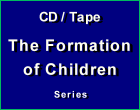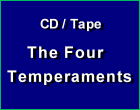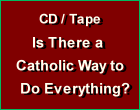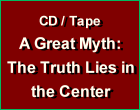Right to Life
 |
 |
 |
 |
 |
 |
 |
In 2011 WHO Warned Against ‘Culture of Fear’
A fine feature of the decentralized network of anti-lockdown Twitter is that it turns up fantastic bits of research that would otherwise go unnoticed. In this case, Kulvinder Kaur MD, president of Concerned Ontario Doctors, discovered an extraordinarily truth-telling bulletin from the World Health Organization that was released July 2011. Its prescience is incredibly obvious. It appeared in times when what we might call the lockdown industry was gaining steam.
This movement was born in the early 2000s with computer scientists who imagined that their agent-based models should replace medical advisories in the event of a pandemic. The Bush administration acquiesced to their ideas in 2006, despite the protests from responsible public health experts.
After that, they organized conferences, published in journals, and generally closed ranks around a fantastic vision of central plan, all well-funded through public money and private philanthropy from the Gates Foundation (Bill Gates, knowing next to nothing about viruses or public health concerns, has been a lockdowner for many years).
All these years later, they got their chance to implement a dangerous social experiment in lockdowns.
 In 2011, the World Health Organization saw what was developing and issued a powerful warning, authored by Luc Bonneux (Netherlands Interdisciplinary Demographic Institute) and Wim Van Damme (Institute of Tropical Medicine). It was a strong attack against the “culture of fear” that could be fomented in the future just as it was in 2006 and 2009. It said plainly that the next pandemic should be treated as we have in the 20th-century past, with calm, not panic, and with a broad-minded focus on public health in a holistic sense.
In 2011, the World Health Organization saw what was developing and issued a powerful warning, authored by Luc Bonneux (Netherlands Interdisciplinary Demographic Institute) and Wim Van Damme (Institute of Tropical Medicine). It was a strong attack against the “culture of fear” that could be fomented in the future just as it was in 2006 and 2009. It said plainly that the next pandemic should be treated as we have in the 20th-century past, with calm, not panic, and with a broad-minded focus on public health in a holistic sense.
Moreover, the memo warned of what we might call the Public Choice elements of the urge to lock down: flu specialists sound unwarranted alarms in order to attract media attention and funding, vaccine makers and marketers looking for government subsidies, and other interest groups that might irresponsibly use a future pathogen.
In times when governments around the world are fomenting fear, turning citizens against each other, stigmatizing those with disease, and teaching people to regard dignified human persons as nothing more than disease vectors, this element of wisdom is a ray of light.
“The repeated pandemic health scares caused by an avian H5N1 [2006] and a new A(H1N1) [2009] human influenza virus are part of the culture of fear. Worst-case thinking replaced balanced risk assessment. Worst-case thinking is motivated by the belief that the danger we face is so overwhelmingly catastrophic that we must act immediately. Rather than wait for information, we need a pre-emptive strike. But if resources buy lives, wasting resources wastes lives.
“The precautionary stocking of largely useless antivirals and the irrational vaccination policies against an unusually benign H1N1 virus wasted many billions of euros and eroded the trust of the public in health officials. The pandemic policy was never informed by evidence, but by fear of worst-case scenarios.”
The WHO issued this blast due to the manufactured media and political panic that occurred in both 2006 and 2009. The headlines blared about the coming danger. Statesmen the world over gave press conferences alongside various public health alarmists. The mainstream media used the occasions to get clicks and freak out.
I recall both well because it was all so strange to see public officials attempting to get their populations in a state of absolute freak out despite any evidence. They got into the habit of imagining the worst-possible outcomes and broadcasting those out to people. In both 2006 (the flu never really left the bird population) and 2009 (which turned out to be no worse than seasonal), the public paid very little attention to the histrionics taking place in the public sector.
What alarmed the WHO in those days was how public health authorities had taken a dangerous turn away from calming the public into sowing public panic.
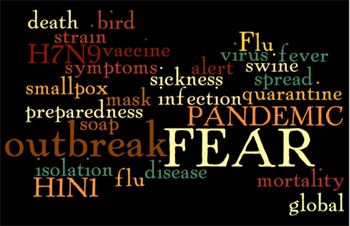 The memo continues:
The memo continues:
“In both pandemics of fear, the exaggerated claims of a severe public health threat stemmed primarily from disease advocacy by influenza experts. In the highly competitive market of health governance, the struggle for attention, budgets and grants is fierce. The pharmaceutical industry and the media only reacted to this welcome boon. We therefore need fewer, not more “pandemic preparedness” plans or definitions.
“Vertical influenza planning in the face of speculative catastrophes is a recipe for repeated waste of resources and health scares, induced by influenza experts with vested interests in exaggeration. There is no reason for expecting any upcoming pandemic to be worse than the mild ones of 1957 or 1968, no reason for striking pre-emptively, no reason for believing that a proportional and balanced response would risk lives.”
If I’m reading this correctly, the WHO seems to be warning of the rise of a whole industry of public officials, media, and pharmaceuticals that is heavily invested in creating panic whenever the next pathogen arrives, wildly exaggerating the threat in their own industrial interests. That’s a strong charge. It seems to have been back up by the unfolding events of 2020.
The memo continues with an offering of an alternative to the culture of fear. Officials should instead look to the evidence and manage a pandemic with clear-headed rationality.
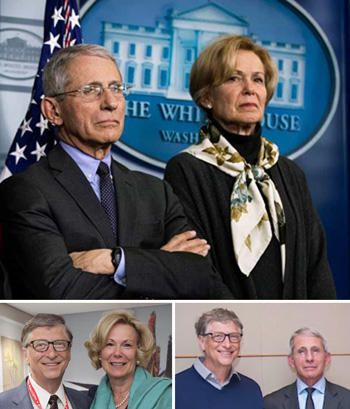 “The opposite of pre-emptive strikes against worst-case scenarios are adaptive strategies that respond to emerging diseases of any nature based on the evidence of observed virulence and the effectiveness of control measures. This requires more generic capacity for disease surveillance, problem identification, risk assessment, risk communication and health-care response. Such strengthened general capacity can respond to all health emergencies, not just influenza. Resources are scarce and need to be allocated to many competing priorities.
“The opposite of pre-emptive strikes against worst-case scenarios are adaptive strategies that respond to emerging diseases of any nature based on the evidence of observed virulence and the effectiveness of control measures. This requires more generic capacity for disease surveillance, problem identification, risk assessment, risk communication and health-care response. Such strengthened general capacity can respond to all health emergencies, not just influenza. Resources are scarce and need to be allocated to many competing priorities.
“Scientific advice on resource allocation is best handled by generalists with a comprehensive view on health. Disease experts wish to capture public attention and sway resource allocation decisions in favor of the disease of their interest. We referred previously to the principles of guidance on health by the British National Institute for Health and Clinical Excellence (NICE), cited as “We make independent decisions in an open, transparent way, based on the best available evidence and including input from experts and interested parties.” Support from disease experts is crucial in delivering opinion, scholarly advice and evidence to a team of independent general scientists. But this team should independently propose decisions to policy-makers and be held accountable for them.”
Finally we get a beautiful closing riposte:
“The key to responsible policy-making is not bureaucracy but accountability and independence from interest groups. Decisions must be based on adaptive responses to emerging problems, not on definitions. WHO should learn to be NICE: accountable for reasonableness in a process of openness, transparency and dialogue with all the stakeholders, and particularly the public.”
What we see in this remarkable memo is identical to the ethos and import of the Great Barrington Declaration, which since its release has been treated like some kind of radical and controversial statement. Actually, the World Health Organization said the same thing in 2011 with much tougher language and more biting analytics, essentially warning that the world is being trolled by interest groups with a vested stake in panic over rational public health measures.
What was true in 2011 is true today. More so than ever.
This article was first published on the website of
American Institute for Economical Research- AIER
on October 20, 2020

This movement was born in the early 2000s with computer scientists who imagined that their agent-based models should replace medical advisories in the event of a pandemic. The Bush administration acquiesced to their ideas in 2006, despite the protests from responsible public health experts.
After that, they organized conferences, published in journals, and generally closed ranks around a fantastic vision of central plan, all well-funded through public money and private philanthropy from the Gates Foundation (Bill Gates, knowing next to nothing about viruses or public health concerns, has been a lockdowner for many years).
All these years later, they got their chance to implement a dangerous social experiment in lockdowns.

In 2011 Prof. Bonneaux, top, & Prof. van Damme, bottom, attacked the ‘culture of fear’ in WHO's official journal
Moreover, the memo warned of what we might call the Public Choice elements of the urge to lock down: flu specialists sound unwarranted alarms in order to attract media attention and funding, vaccine makers and marketers looking for government subsidies, and other interest groups that might irresponsibly use a future pathogen.
In times when governments around the world are fomenting fear, turning citizens against each other, stigmatizing those with disease, and teaching people to regard dignified human persons as nothing more than disease vectors, this element of wisdom is a ray of light.
“The repeated pandemic health scares caused by an avian H5N1 [2006] and a new A(H1N1) [2009] human influenza virus are part of the culture of fear. Worst-case thinking replaced balanced risk assessment. Worst-case thinking is motivated by the belief that the danger we face is so overwhelmingly catastrophic that we must act immediately. Rather than wait for information, we need a pre-emptive strike. But if resources buy lives, wasting resources wastes lives.
“The precautionary stocking of largely useless antivirals and the irrational vaccination policies against an unusually benign H1N1 virus wasted many billions of euros and eroded the trust of the public in health officials. The pandemic policy was never informed by evidence, but by fear of worst-case scenarios.”
The WHO issued this blast due to the manufactured media and political panic that occurred in both 2006 and 2009. The headlines blared about the coming danger. Statesmen the world over gave press conferences alongside various public health alarmists. The mainstream media used the occasions to get clicks and freak out.
I recall both well because it was all so strange to see public officials attempting to get their populations in a state of absolute freak out despite any evidence. They got into the habit of imagining the worst-possible outcomes and broadcasting those out to people. In both 2006 (the flu never really left the bird population) and 2009 (which turned out to be no worse than seasonal), the public paid very little attention to the histrionics taking place in the public sector.
What alarmed the WHO in those days was how public health authorities had taken a dangerous turn away from calming the public into sowing public panic.

‘The pandemic policy was never informed by evidence, but by fear of worst-case scenarios’
“In both pandemics of fear, the exaggerated claims of a severe public health threat stemmed primarily from disease advocacy by influenza experts. In the highly competitive market of health governance, the struggle for attention, budgets and grants is fierce. The pharmaceutical industry and the media only reacted to this welcome boon. We therefore need fewer, not more “pandemic preparedness” plans or definitions.
“Vertical influenza planning in the face of speculative catastrophes is a recipe for repeated waste of resources and health scares, induced by influenza experts with vested interests in exaggeration. There is no reason for expecting any upcoming pandemic to be worse than the mild ones of 1957 or 1968, no reason for striking pre-emptively, no reason for believing that a proportional and balanced response would risk lives.”
If I’m reading this correctly, the WHO seems to be warning of the rise of a whole industry of public officials, media, and pharmaceuticals that is heavily invested in creating panic whenever the next pathogen arrives, wildly exaggerating the threat in their own industrial interests. That’s a strong charge. It seems to have been back up by the unfolding events of 2020.
The memo continues with an offering of an alternative to the culture of fear. Officials should instead look to the evidence and manage a pandemic with clear-headed rationality.

‘Disease experts capture public attention & sway resources in favor of the disease of their interest’
“Scientific advice on resource allocation is best handled by generalists with a comprehensive view on health. Disease experts wish to capture public attention and sway resource allocation decisions in favor of the disease of their interest. We referred previously to the principles of guidance on health by the British National Institute for Health and Clinical Excellence (NICE), cited as “We make independent decisions in an open, transparent way, based on the best available evidence and including input from experts and interested parties.” Support from disease experts is crucial in delivering opinion, scholarly advice and evidence to a team of independent general scientists. But this team should independently propose decisions to policy-makers and be held accountable for them.”
Finally we get a beautiful closing riposte:
“The key to responsible policy-making is not bureaucracy but accountability and independence from interest groups. Decisions must be based on adaptive responses to emerging problems, not on definitions. WHO should learn to be NICE: accountable for reasonableness in a process of openness, transparency and dialogue with all the stakeholders, and particularly the public.”
What we see in this remarkable memo is identical to the ethos and import of the Great Barrington Declaration, which since its release has been treated like some kind of radical and controversial statement. Actually, the World Health Organization said the same thing in 2011 with much tougher language and more biting analytics, essentially warning that the world is being trolled by interest groups with a vested stake in panic over rational public health measures.
What was true in 2011 is true today. More so than ever.
American Institute for Economical Research- AIER
on October 20, 2020

Posted October 28, 2020
______________________
______________________






